NASA and Boeing continue to make progress toward the company’s second uncrewed flight test of the CST-100 Starliner spacecraft prior to flying astronauts to the International Space Station as part of NASA’s Commercial Crew Program.
The Commercial Crew Program currently is targeting no earlier than December 2020 for launch of the uncrewed Orbital Flight Test-2 (OFT-2) pending hardware readiness, flight software qualification, and launch vehicle and space station manifest priorities.
Over the summer, Boeing’s Starliner team focused on readying the next spacecraft for its upcoming flight tests as well as making improvements identified during various review processes throughout the beginning of the year. NASA also announced an additional crew assignment for its first operational mission, NASA’s Boeing Starliner-1, with astronauts to the space station. Here’s more on the recent progress:
Starliner Progress
Teams from Boeing are well into final assembly of the crew and service modules that will fly OFT-2 to the space station inside of the company’s Commercial Crew and Cargo Processing Facility (C3PF) at NASA’s Kennedy Space Center in Florida. OFT-2 will fly a new, reusable Starliner crew module providing additional on-orbit experience for the operational teams prior to flying missions with astronauts. For Boeing’s Commercial Crew missions, the Starliner spacecraft will launch atop a United Launch Alliance Atlas V rocket.
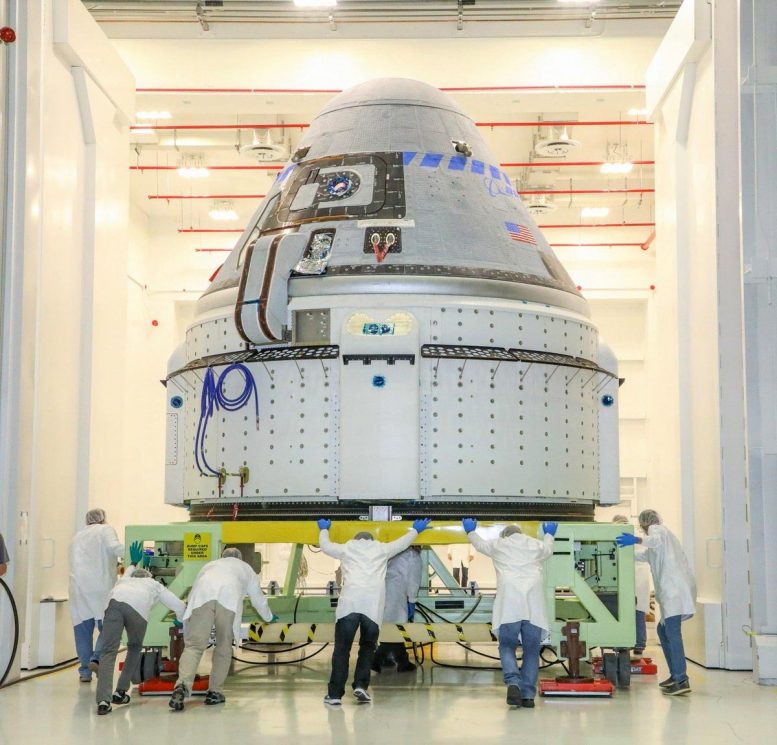
The CST-100 Starliner spacecraft to be flown on Boeing’s Orbital Flight Test (OFT) is viewed November 2, 2019, while undergoing launch preparations inside the Commercial Crew and Cargo Processing Facility at Kennedy Space Center in Florida. Credit: Boeing
With the majority of assembly complete, recent progress is focused on the NASA docking system re-entry cover, which was added to the design for additional protection of the system. The team also has completed the installation of the Starliner propellant heater, thermal protection system tiles and the air bags that will be used when the spacecraft touches down for landing. As final production activities continue to progress, the crew module recently entered acceptance testing, which will prove out the systems on the spacecraft before it’s mated with its service module.
In Houston, the software team is nearing the final stages of modifying and re-verifying the flight code after the first uncrewed flight test. As part of that effort, the team recently began a major milestone called Formal Qualification Testing, which is a comprehensive test of flight software and an important step in preparing for an end-to-end mission rehearsal test.
Boeing also remains focused on incorporating the recommendations from the joint NASA-Boeing Independent Review Team with almost 75% of the 80 proposed actions implemented. The independent team was formed to review anomalies experienced during OFT, which led to Starliner not reaching its planned orbit or docking to station as planned, and to provide recommendations to ensure a robust design for future missions. In addition to opting to re-fly its uncrewed flight test, Boeing elected to comprehensively implement all of the recommendations provided by the review team.
Following a successful OFT-2, Boeing will focus full attention on preparations for its final flight test with astronauts and is already completing work on the Crew Flight Test spacecraft in parallel. Teams continue refurbishing the crew module flown on Starliner’s first uncrewed flight test for reuse with astronauts. After removing and conducting checkouts on various systems and flight hardware, Boeing is preparing to reassemble the vehicle for flight. Soon, outfitting of the crew module’s interior will begin along with packing parachutes and airbags ahead of installation. The vehicle’s NASA Docking System has been modified to accommodate the new cover, and outfitting of subsystem components continues on the spacecraft’s brand new service module.
Crew Updates and Target Flight Schedules
In advance of the OFT-2 mission, flight control teams from NASA and Boeing completed an integrated launch-to-docking simulation in August with additional mission simulations on the horizon as the teams fine-tune flight rules and procedures.
After a successful OFT-2, Boeing and NASA will fly Starliner’s first crewed mission, the Crew Flight Test, currently targeted for no earlier than June 2021, with the first post-certification mission, called Starliner-1, tentatively scheduled for no earlier than late December 2021.
The CFT crew members are Boeing astronaut Chris Ferguson and NASA astronauts Mike Fincke and Nicole Mann.
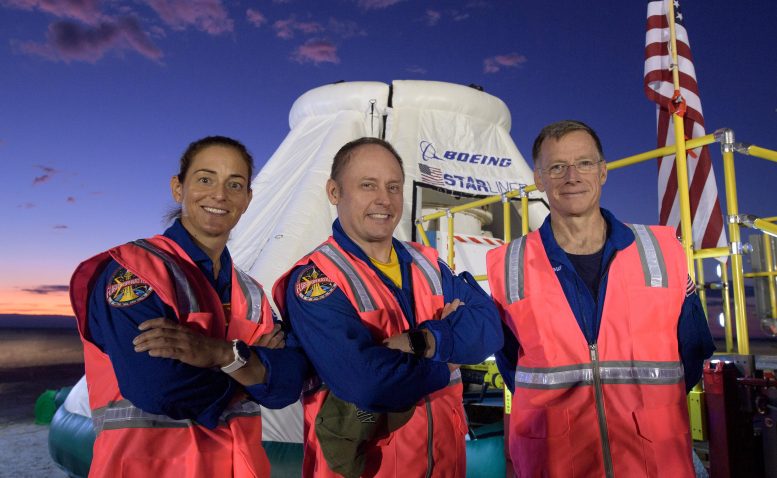
NASA astronauts Nicole Mann, left, Mike Fincke, and Boeing astronaut Chris Ferguson, right, pose for a photograph on September 11, 2019, as they, along with teams from NASA, Boeing and the White Sands Missile Range, rehearse landing and crew extraction from Boeing’s CST-100 Starliner. Credit: Boeing
In addition to training for living and working on station, astronauts continue to work closely with Starliner test teams. Several crew members plan to participate in ongoing acceptance testing of the OFT-2 crew module inside the C3PF.
Recently, the CFT crew helped test software updates with real flight hardware in Boeing’s Avionics and Software Integration Lab in Houston. They practiced performing manual separation events for several low likelihood contingencies, demonstrating the software improvements had no adverse effect on controls needed to stay safe in any situation. The crew also participated in procedural dry runs for future life support tests with the Starliner spacecraft in Florida. Later this year, the CFT crew will be suited inside the spacecraft with the vehicle providing all of their life support.
NASA astronauts Sunita Williams, Josh Cassada, and Jeanette Epps are crew members of the Starliner-1 mission. Cassada and Williams were both selected for the mission in August 2018, and NASA announced Epps’ assignment on August 25, 2020.
Astronauts for both CFT and Starliner-1 missions regularly participate in rehearsals of launch and mission operations in both normal and emergency scenarios. They also are continuing with on-going mission-specific training for life in orbit including the work they’ll perform after joining their respective Expedition crews awaiting them on station.
The goal of NASA’s Commercial Crew Program is safe, reliable and cost-effective transportation to and from the International Space Station. This could allow for additional research time and increase the opportunity for discovery aboard humanity’s testbed for exploration, including helping us prepare for human exploration of the Moon and Mars.

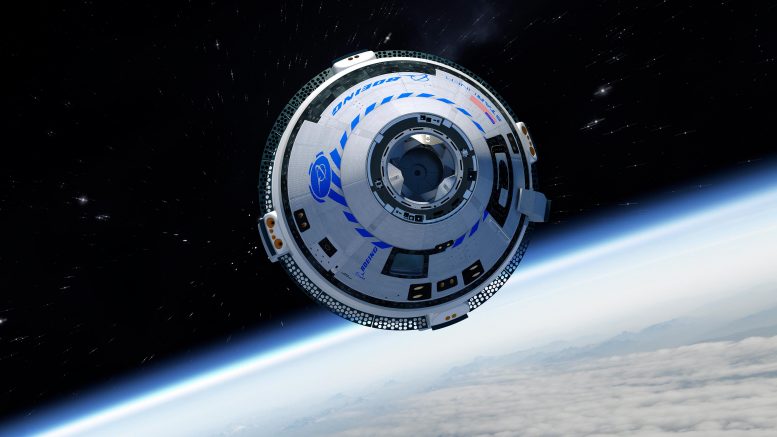
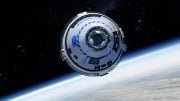
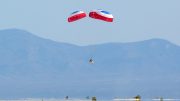
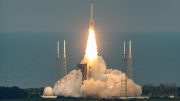
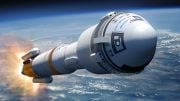
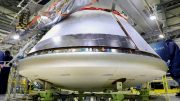
sorry, but i wouldn’t trust Boing software yet. just sayin…
Let us build the sensors to track it all – J4TG-Lasers (Comms for life) (Lasers for Life)
Maybe we can hurry up and make it to mars, but first we need to build the space port and optical space communications for everything to sync up.
To sum up, Starliner is now one year behind Dragon Crew.
ISS needs that backup, but else it looks like (eventually certified) crap.
I think the headline is bogus. I don’t see any specific progress.
Makes progress? what? They are at least a year behind another test launch… Heck they should have two, before they even think of including humans. I don’t trust them and hope their program is simply cancelled. Between ULA and Boeing we can save a bot load of money. Give it all to SpaceX and when ULA or Boeing earn it, bring them back.
Just somebody remind Boeing if they do a plugs-out test with the astronauts onboard, to NOT use a 100% oxygen atmosphere, and to check all wiring insulation for fraying! We don’t need any repeats of Apollo 201!
Honestly, we DO need this spacecraft as a backup to SpaceX Crew Dragon and Soyuz and any other manned spacecraft. We don’t want all our eggs in one basket!
I worry about the whole situation and design. Errant test 1 shows high heat. Which project had heat shield move out of the placement and caused severe interior heat in capsule?
Fasteners from fastenel?
Back up crew needs training.
Makes three parrellem Boeing. Need mockup to be actual and for space ready launch emergency.
Competitor dragon crew to be issued emergency escape pod.
Buck Rogers starship vertical land in retro-fire mode starliner also.
I know you can’t…
Put a toilet install on iss.
Design on gyromotion and rid-ex complement, rotates to sludge-liquid.
Moon revisit Saturn v , lunar expedition only.
Original starliner Lem, (pbs)…
Mars 96 month… Yet viable non/manned and need lunar types.??? 👋 Dragon crew, space x, heard that eminent domain hit their science logs and archived projects for Audit of contractor and products…
Boeing aerospace-boac?
Hope you have a great period consisting of months ago and the rest of the house and family are well and happy holidays….
47th expedition aviation.
Out
If you can do it, do it. Actions speak louder than words. I want several companies making our species multiplanitary. I only see one. I am disappointed.
I trust Boeing over SpaceX anyday
i love the spacecrafts…it’s marvellous and significents…i like it very much…